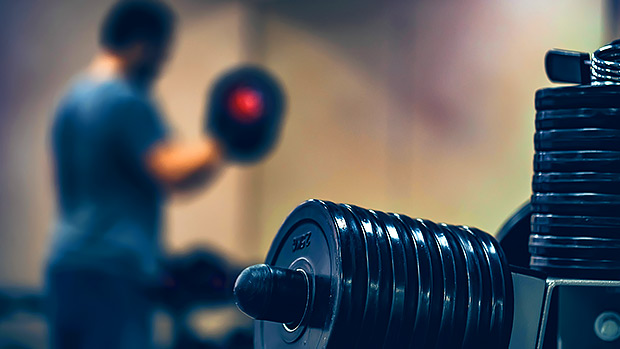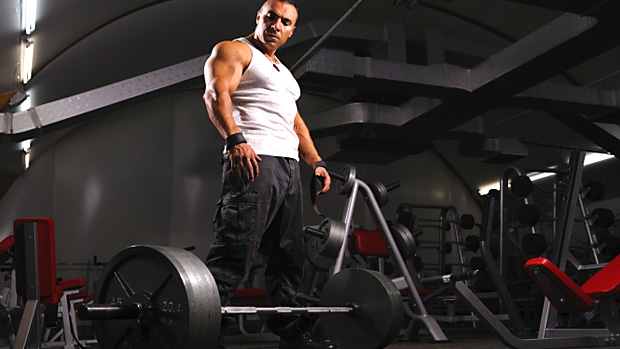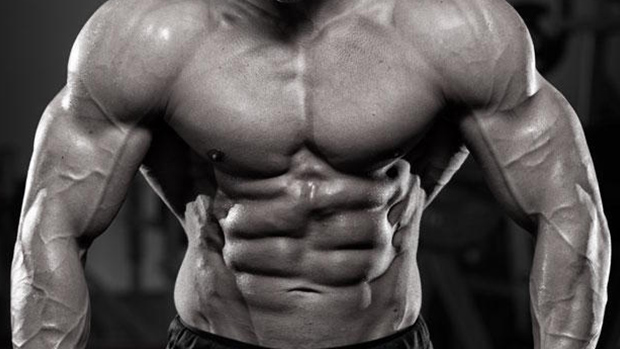What's a Non-Responder?
A "non-responder" refers to someone who's never been able to build a significant amount of muscle – ever – even with hard lifting and plenty of food.
There are several things that can cause this condition, and we'll get to those in a minute.
But keep this in mind: A non-responder is NOT a person who has recently hit a plateau. If you've added 20 pounds of muscle throughout your training career and now have a hard time gaining more, you're not a low-responder. You're just closer to your genetic limit, which makes it harder to continue building muscle.
Also, you might've made yourself "resistant" to training (training immunity) by working out the same way for too long.
Now, let's assume a person is training enough and eating enough to support growth, yet still not growing. The next question is... why?
Here are some possible causes:
- An overproduction of myostatin. Remember, myostatin is a growth-limiting protein released by the muscles. The less you produce, the more growth you get. The more you produce, the less muscle you can build.
- Chronically elevated cortisol levels. This increases muscle breakdown, reduces glycogen resynthesis, and increases myostatin, all of which make it harder to progress.
- An ACTN3 XX genetic profile. This leads to a higher ratio of slow-twitch fibers (which have less growth potential), a smaller response to training (less mTOR activation), and a longer recovery period to repair muscle damage.
- Problems clearing out adrenaline (slow COMT enzyme). This keeps the person in sympathetic mode, which both burns a lot of energy and makes it harder to get into rest/recover mode.
- Low anabolic hormones. Testosterone can be a part of it but, more often than not, it's because of low IGF-1 production by the liver.
- Digestive issues. Eating more should help anyone grow, but if you can't absorb the nutrients properly then more food can actually make it harder to gain as it will cause a stress response.
- Insulin resistance, especially muscle-insulin resistance. This makes it harder to bring nutrients to the muscles to fuel growth. Overall insulin resistance can make it harder to lose fat.
Normally, someone will be a low-responder because of a combination of several factors. To figure out the best way to train, you must first figure out the type of hardgainer you are.
1. The True Hardgainer
This guy can't build a lot of muscle and doesn't gain much strength either. He normally has a frail build, recovers more slowly from illnesses and injuries, and has a hard time being fast or explosive.
While he often has a low level of body fat, he looks more skeletal than lean. His muscle tone and definition is on the low side. He's the stereotypical "pencil-neck geek" from the old muscle magazine ads.
A true hardgainer will normally have the ACTN3 XX genotype which makes him more slow-twitch dominant and gives him a poorer response to strength training. He has a frail digestive system, too. He's often a "worrier" who produces more cortisol and has a higher myostatin expression.
2. The Easy-Hardgainer
Building muscle is really hard for him but, oddly, he can gain strength fairly easily. He's naturally explosive with high muscle tone, and he tends to be lean. This guy might improve his big lifts by 50 pounds or more without gaining much, if any, muscle mass.
The easy-hardgainer has the ACTN3 RR genotype which gives him more fast-twitch fibers. But he's really inefficient at breaking down adrenaline (slow COMT enzyme and maybe poor methylation) which keeps him in sympathetic mode for a lot longer than most.
This increases the metabolic rate which makes it harder for him to ingest enough food to build a lot of muscle. But the combination of a high ratio of fast-twitch fibers and being constantly in sympathetic mode (amped up) makes him explosive and strong for his size. It also gives him very high muscle tone. He tends to have sleep issues and a boiling character.
3. The Endo-Hardgainer
This is the guy that has a hard time building muscle but an easy time gaining fat. He can range from "skinny fat" all the way to overweight with very little muscle. He tends to have low energy and low muscle tone.
The endo-hardgainer has the ACTN3 XX genotype which gives him more slow-twitch fibers and a poorer response to resistance training. He also has low insulin sensitivity which makes it harder to build muscle and lose fat.
He has low sympathetic activity (either because he doesn't produce much adrenaline and dopamine, or because he breaks it down super fast) which gives him low drive and energy, as well as soft muscle tone. He also tends to have low levels of T3, which will negatively affect energy, capacity to lose fat, and build muscle.

True Hardgainers
Don't focus on muscle damage. Instead, focus on the metabolic pathway of muscle growth. Muscle damage occurs mostly with fairly heavy work on exercises where the muscle is being stretched under load.
The metabolic pathway focuses on training zones that lead to an accumulation of lactate – sets lasting 40-70 seconds with a controlled lowering and lifting tempo. Lactate has been shown to increase follistatin which decreases myostatin.
- Stick to three workouts per week, and not on consecutive days.
- Use whole-body training. It decreases myostatin more than upper/lower-body splits.
- Use a moderate training volume, 2-4 sets of 6 exercises per workout.
- Lean towards higher-rep sets.
- Sets should last 40-70 seconds.
- True hardgainers respond well to slow eccentrics and to a slightly reduced range of motion when they use multi-joint movements (to cause less muscle damage).
Easy-Hardgainers
For growth, they'll respond better to minimalist training.
- Perform whole-body workouts, 3 days a week on non-consecutive days, focusing on the big basic lifts.
- If size is the goal, favor sets of 5-8 reps. This type has the lowest tolerance for volume. I trained two high-level athletes like this. They could do, at the most, 9 total work sets per workout.
- Do 3-4 exercises per workout, mostly multi-joint movements.
- Do 2-4 work sets per exercise.
- Use long rest intervals between sets.
Endo-Hardgainers
These guys are tough to train. It's very hard to motivate them to do what's needed in the gym. But here are the guidelines that work best for them:
- Use shorter rest internals between sets.
- Train in the lactate zone – 40-70 seconds under tension per set. This will be very hard for them due to their lack of drive.
- Use full-body workouts.
- De-emphasize the eccentric/negative to get the least amount of muscle damage possible. Endo-hardgainers don't repair muscle damage well, plus muscle damage reduces muscle-insulin sensitivity even more. I really like Prowler pushing, sled dragging, farmers walks, and other loaded carries for them.

True Hardgainers and Easy-Hardgainers
The true and easy-hardgainers will do better on a carb-dominant diet. Meaning, once they fill their protein requirements (around 1 gram per pound of bodyweight) most of their energetic nutrients should come from carbohydrates.
Why? Because they need the carbs to reduce sympathetic activity. They also tend to have a less efficient digestive system and fats are harder to process.
Endo-Hardgainers
They would go the opposite direction: a fat-dominant diet with carbs only used post-workout and maybe a little bit in the evening.
In their case, they need to improve insulin sensitivity and augment sympathetic activity. That's best done with a lower (but not zero) carb diet.





